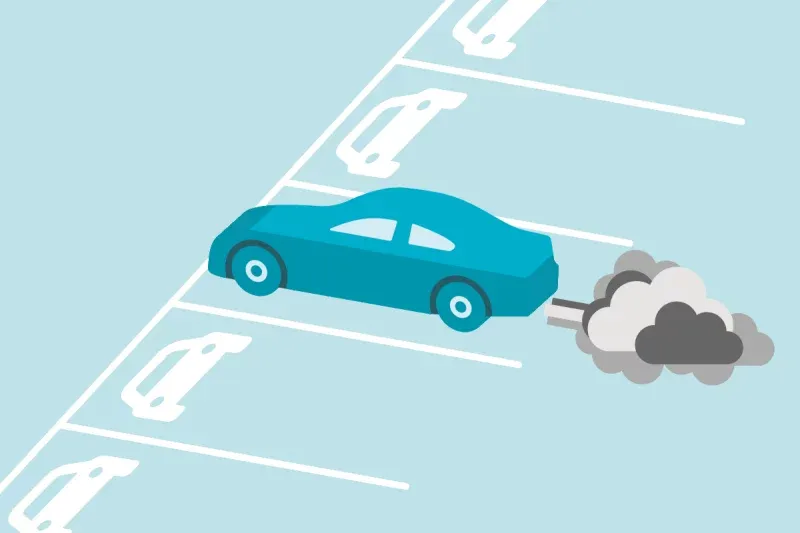If you let your car run idle, you are letting the engine run without the car moving. Doing this is an integral part of driving a car. For example; when you’re stopped for a red traffic light, your car is standing still, but the engine is running idle. Sometimes, however, people let their engine run idle for a longer time. To warm up the car or to deliver a package. Is this a smart practice, or no? FleetGO tells you more about this topic.
Fuel consumption of the car
Are you letting your vehicle run stationary? In that case, you’re consuming additional fuel. This is dependent on the capacity of the cilinder inside of the engine. A heavier engine also uses more fuel when running stationary. Still, keep in mind that any engine uses less fuel when stationary compared to when you’re driving the vehicle. However, it is fuel you don’t use to propel the vehicle and is therefore lost.
As a rough estimation for the stationary fuel use of engines is as follows:
About 0.5 to 1 litres of petrol per hour for petrol engines
About 0.2 to 0.6 litres of diesel per hour for diesel engines
Environmental impact
Not only your wallet takes a hit from an engine running stationary. All the extra emissions are bad for the environment. Especially in big cities, it can contribute to bad air quality. A downside of it all is that all emissions are made locally in cities, standing still in front of a red light adds huge amounts of emissions in cities. For this reason, many modern vehicles are equipped with a start-stop system.
Is idling your car bad for the engine?
Letting your vehicle idle is not good for the engine. An engine that is turned on adds more wear when the vehicle is not driving. Also, the efficiency of the motor oil is decreased, which means you have to fill your oil up more often. Also, the engine is not at an optimal temperature, meaning the gas is not burned optimally. This can damage the the spark plugs and exhaust. In the end, the engine will not last as long.
What can fleet managers do?
Every vehicle owner will benefit from letting their engine idle as little as possible. However, for fleet managers it is important to make sure the engines of their vehicles are idle as little as possible as well. It can save them huge amounts of money.
Does the fleet consist of small vehicles? Then the engine should be turned off when the vehicle is standing still for more than ten seconds. This knowledge should be communicated with the drivers. Also, don’t let the drivers warm up the engine before driving off; the engine gets up to temperature faster when the vehicle is driving.
Use a GPS tracker to collect driving data of the drivers. This way, as a fleet manager, you get insight in areas of improvement. Educate your drivers; explain to them the downsides of idling their vehicles. Also, tell new employees immediately about the guidelines about the topic.
Idling your car? The answer is no.
Idling your vehicle will increase the fuel use. In addition, it’s bad for the engine and the environment. Cars that idle often, will need maintenance faster and more often. Vehicle owners and fleet managers can save money on fuel and maintenance by not letting their vehicles idle unnecessarily.



